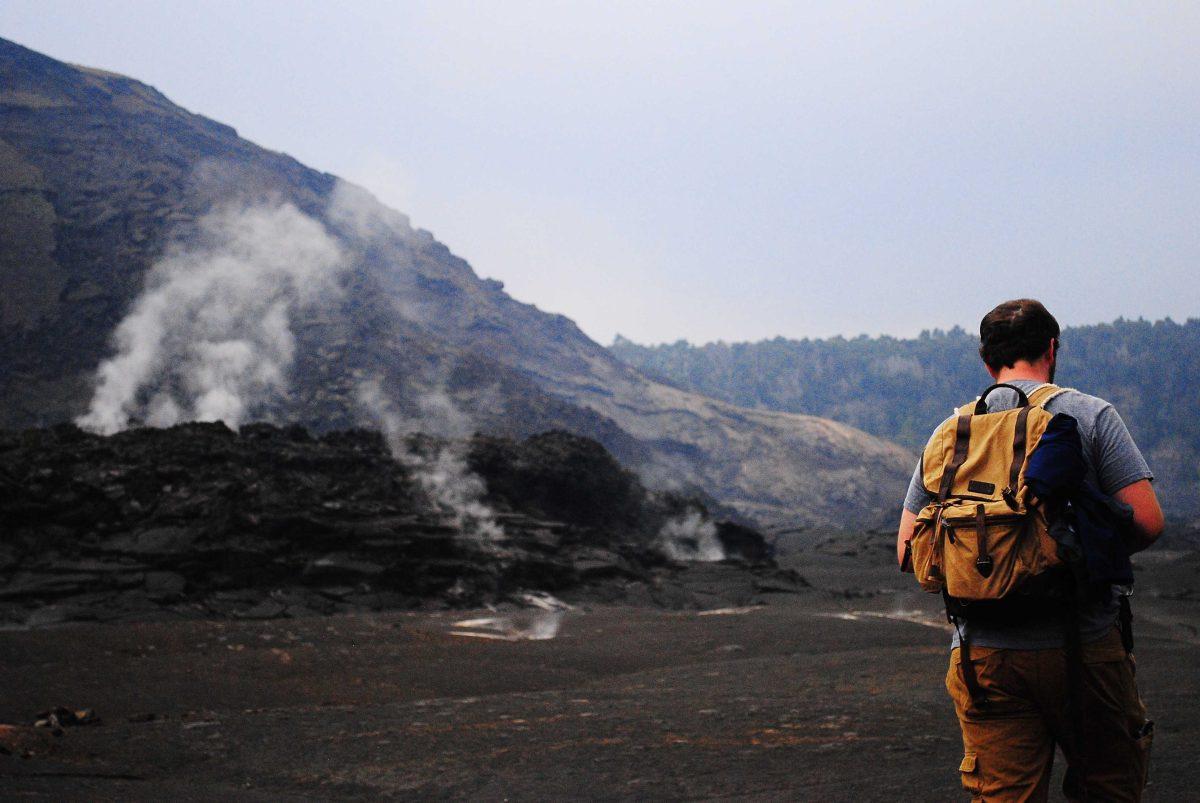Scientists have many questions about Mars, and for a University research team, the best place to search for answers lies on the island of Hawaii.
Geology doctoral student Donald Hood — along with research assistant professor J.R. Skok, mechanical engineering junior Nicholas Olsen and anthropology and geology senior David Susko — embarked on a weeklong expedition with NASA’s Field Investigations to Enable Solar System Science and Exploration team to study Hawaii’s pit craters, magma chambers and lava tubes.
“Anyone in our lab that was interested in participating on the trip submitted project ideas in order to participate in the expedition,” Hood said. “Hawaii is a fantastic place to do planetary science research, at least on Earth. You can’t pass up an opportunity to go there on a field mission.”
Funded by a grant given to Skok and assistant professor Suniti Karunatillake by the Louisiana Space Consortium, the team spent the second week of January collecting samples, measuring craters and visiting different sections of the Hawaii Volcanoes National Park to provide insight on Mars’ surface and the planet’s evidence of life. Samples from Hawaii are a reliable source for research on Mars because the lava forming in both locations is chemically similar.
Hood measured and tried to understand why pit craters in Hawaii differ from those found on the moon, Mars and in Iceland.
“There was a paper, I think in 1998, that explained how pit craters form, and even though the science was right, there was something about Hawaii that doesn’t add up for me,” Hood said. “We have a really good grasp about how pit craters form in other places. In Mars, for example, the craters form perfectly in line. Hawaii’s craters don’t, and it’s just bizarre. I want to figure out how they form.”
Hood didn’t get the results he aimed for because the magnitude of some craters proved too difficult.
However, Hood said he now knows how to approach the area and what tools he needs to get the information the next time he makes the trip to the rocky island.
Susko’s project required sample collection to characterize lava flows from different areas in Hawaii.
Hood said Olsen’s research, inspired by a rare palm tree that only grows in Arizona slot canyons, looks at the ability of lava tubes to protect and preserve microclimates.
“These trees come from a time when the air wasn’t so arid in Arizona,” Hood said. “So these canyons are kind of like a window to the past. What [Olsen] is doing is trying to quantify the capability of lava tubes to protect microclimates. Say Mars was habitable 2 million years ago — if there’s a stable lava tube that can hold a microclimate for 2 million years, that’s where we should look for life. It’s like [the movie] ‘Journey to the Center of the Earth,’ but not science fiction.”
Karunatillake said the projects proposed by Susko, Hood and Olsen were promising for the team’s research.
The team’s trip to Hawaii, Karunatillake said, is an oddity, as most research on Mars is done through virtual portals.
Though expeditions with specialized research focuses are rare, University students in the geology department are required to take one “field camp” course to get first-hand research experience before graduation.
“Exploration and wanting to reach beyond what we have access to is the key thing that makes us human,” Karunatillake said. “This kind of research gives students an immediate experience where they get to go to places they’ve never had access to and consider questions that no one has asked before. Sharing that sense of excitement that early explorers had in the past is really a unique experience that justifies the funding used for projects like this.”
Karunatillake’s research team is currently looking for undergraduate students with knowledge on image editing and web hosting to join the team.
University researchers travel to Hawaii for planetary science projects
February 26, 2015
University researchers explore Hawaii’s volcanoes to gain insight of life on Mars.





